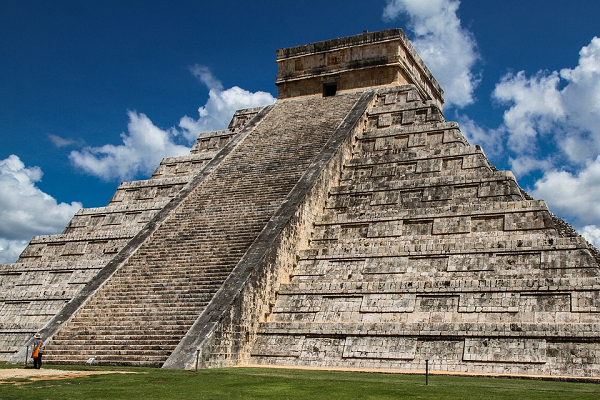Mérida, Yucatán, (August 06, 2021) .- For the second consecutive month, Chichén Itzá becomes the most visited archaeological zone in the country, while Dzibilchaltún fell to the eleventh place of tourist influx, due to the closure of the site by the Ejidatarios of the Chablekal community of Mérida, revealed the National Institute of Anthropology and History (INAH).
At the national level, the total influx registered in the first seven months of 2020 is below the average, while Yucatan has already exceeded the corresponding figure, with the arrival of just over one million visitors, from January to July of the year in course.
In the first seven months of the year, in Yucatán, just over a million people have attended the seven archaeological zones open to the public.
Even July was the month with the highest influx during the current year, and the figure is expected to increase, and more with the reopening of the other areas of archaeological monuments.
According to the INAH, during the first seven months of the year, 3,037,951 people entered the country’s museums and archaeological sites, a figure that is 52.6 percent lower than the same period in 2020, when the sum was 6,411,581 tourists, corresponding to the first quarter. In March of that year, the sites closed down due to the contingency established by Covid-19.
Of the total number of visitors, 2,621,561 went to pre-Columbian cities and 416,390 entered a museum.
As a result of the pandemic, only seven of the 17 archaeological sites open to the public are allowed in Yucatán.
At the national level, as of last June, Chichén Itzá is the most visited archaeological heritage area with 804,749 walkers, 30.7 percent of the total, followed by Tulum, with 578,572 tourists, 22.07 percent, and Teotihuacan, with 236,105 people, 9.01 percent.
Only in these three sites, 61.78 percent of the total archaeological tourism is registered, two out of every three visitors, established the INAH through its electronic page.
While Uxmal was located in the seventh national place, with 3.2 percent of the national total; Ek’Balam is in eighth place, 1.83 percent; Dzibilchaltún is in the eleventh step, 1.02 percent, and Mayapán, in the twelfth position, with 0.81 percent; Izamal, in 19th place, with 0.57 percent, and Xkambó, with 0.46 percent.
After the appearance of Covid-19 in the Mexican Republic, it was decided to close the 193 archaeological zones open to the public as well as the 162 museums in the country.
These cultural centers have been gradually beginning to open partially since September of the same year, although in many of these places, the reopening has not yet arrived.
TYT Newsroom



